1956 Firts -1000m underground
In 1956, the Berger chasm saw a revolutionary change in the way it was explored. Previously, exploration had been reserved for the minority of a club or national organization. Jo Berger, on the other hand, thought he’d put it on an international scale, and at the same time prove the reality of the previous years’ records to skeptics.
The aim was to invite a number of foreign clubs, while reserving the “grand première” for the French team, which was only natural. The caving elite of the time, representing 8 nationalities: Lebanon, Italy, Belgium, Switzerland, Poland, England, Spain and Czechoslovakia.
Given the scale of the expedition, they will also be looking for sponsors (the 1st caving marketing in history, as can be seen in a few photos), as well as the support of the authorities for air transport (airplane and helicopter). The rest will be carried out by men (and women), as over 3.5 tonnes of equipment (218 bags) will have to be hauled up to the Sornin plateau.
From the end of June, the surface camp is set up next to the entrance to the chasm. Even a stove and running water from a spring are brought in via over a kilometer of plastic pipe… almost 5 stars comfort!
To facilitate the descent and final assault, a preliminary expedition was planned from July 15 to 23, 1956, with 16 cavers staying underground for a week.
It will enable us to transport 2 tonnes of equipment (including 10 bags of material needed to make a live film marking the 1st -1000 underground) and equip the camps in the Salle des Treize at -500m, the Toxasters (sea urchin fossil) at -860m and Camp 3 at -910m in the Salle de Joly.
A helicopter loaned by EDF and a plane will drop off some of the equipment in several rotations in a nearby meadow.
For the final assault, the lead team of 12 men set off on August 3 in groups of 6. The days followed one after the other, with the ever-tightening carrying of packs, the setting up of bivouacs and the equipping of wells.
The first shots are also taken for the film that will record the exploit. Weather reports arrive regularly from Grenoble via radio.
After 1 1/2 days’ rest, they set off again, this time divided into 3 teams, one of which was to set up camp3 at -910 in the Joly room. On August 11, the first team set off to equip the “Vire Tu Oses” and the “Ouragan” waterfall, the stopping point of the 1955 expedition.
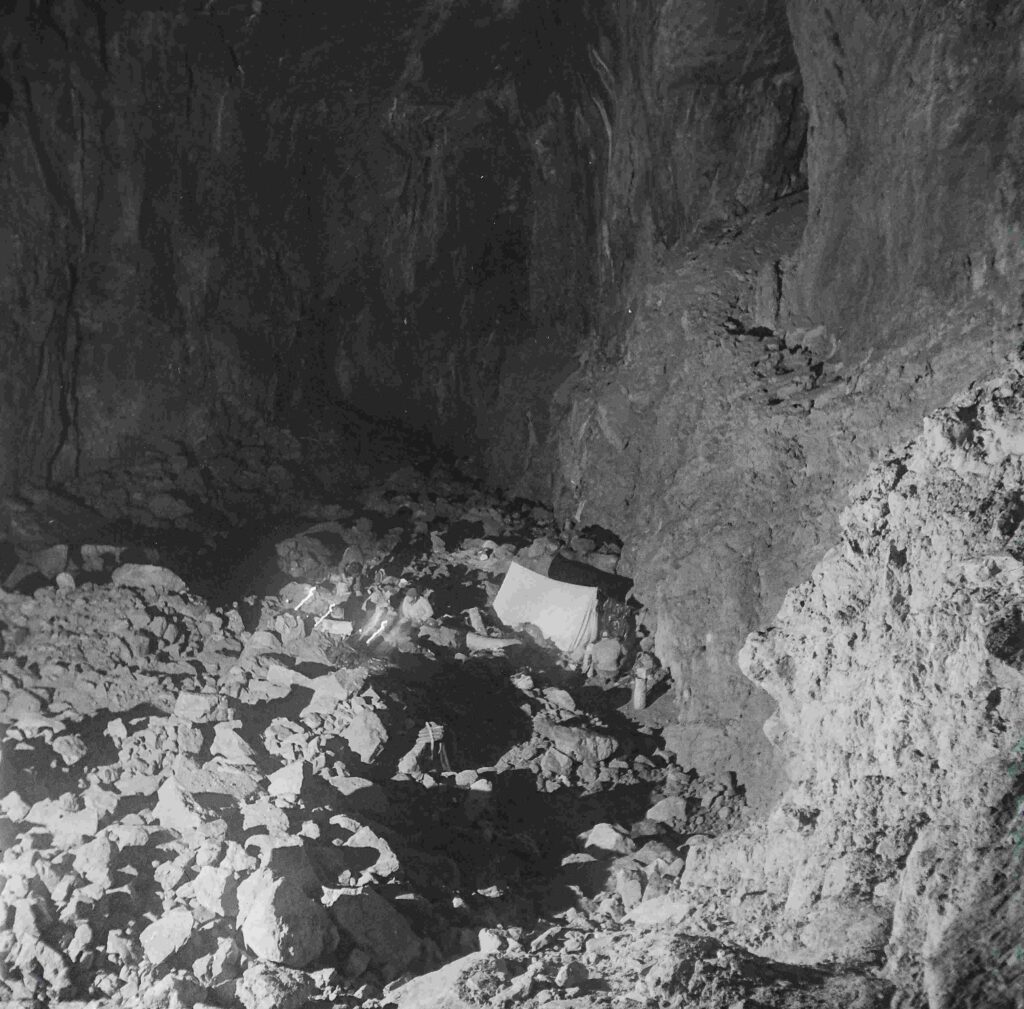
The “Vire tu oses” is a narrow, sloping route to the void at -950 m, enabling you to avoid the river.
The “Ouragan” is the last shaft in the complex, where the waterfall is pulverized after some forty metres with an impressive crash.
The mythical -1000 mark is right in the middle. The difficulty is to avoid being knocked out by the icy water, and the spray from the waterfall soaks your clothes.
After abseiling below the waterfall, which cannot be entirely avoided, they descend the large gallery that follows and are stopped by a deep body of water.
They go back up to get a canoe. The tube is 2 m wide and narrows as the vault lowers, then rises again. The caver and canoe can’t get through together, and he has to take a forced bath at 5°.
Twenty metres further on, they reach the -1122 m siphon at midnight.
This is the terminus.
The other crew members then arrive to take photos for the film commemorating the feat.
Now it was time to bring down the foreigners. This took place from August 12 to 19, 1956, with French cavers in 2 teams on the 12th and 14th.
Some, for lack of suitable equipment, physical condition or safety reasons, stopped before reaching the final siphon.
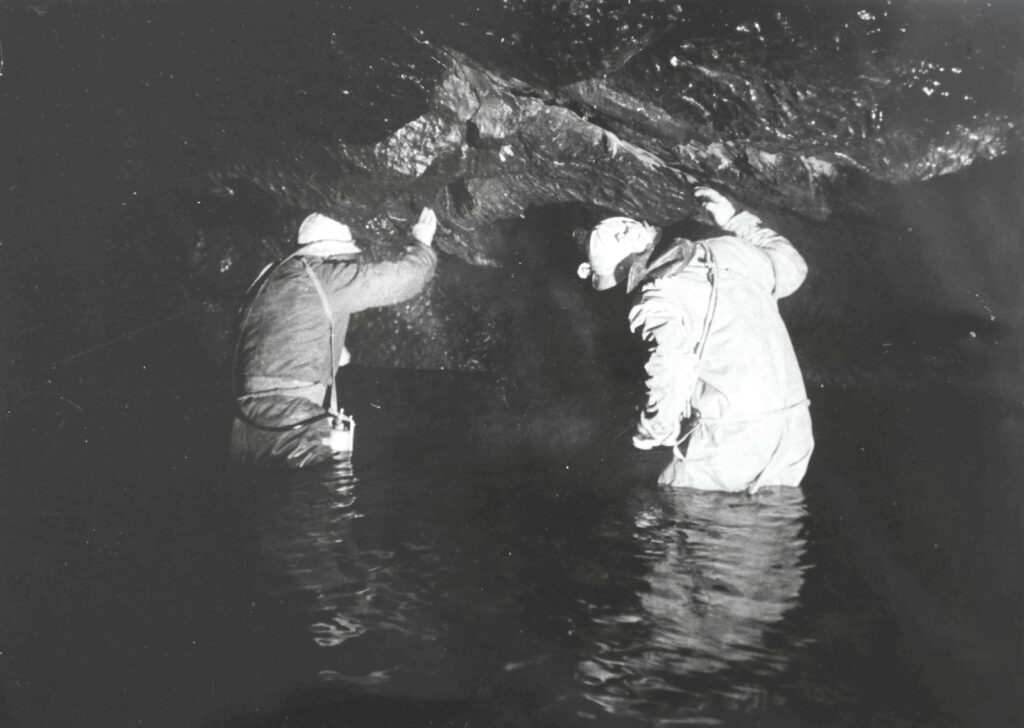
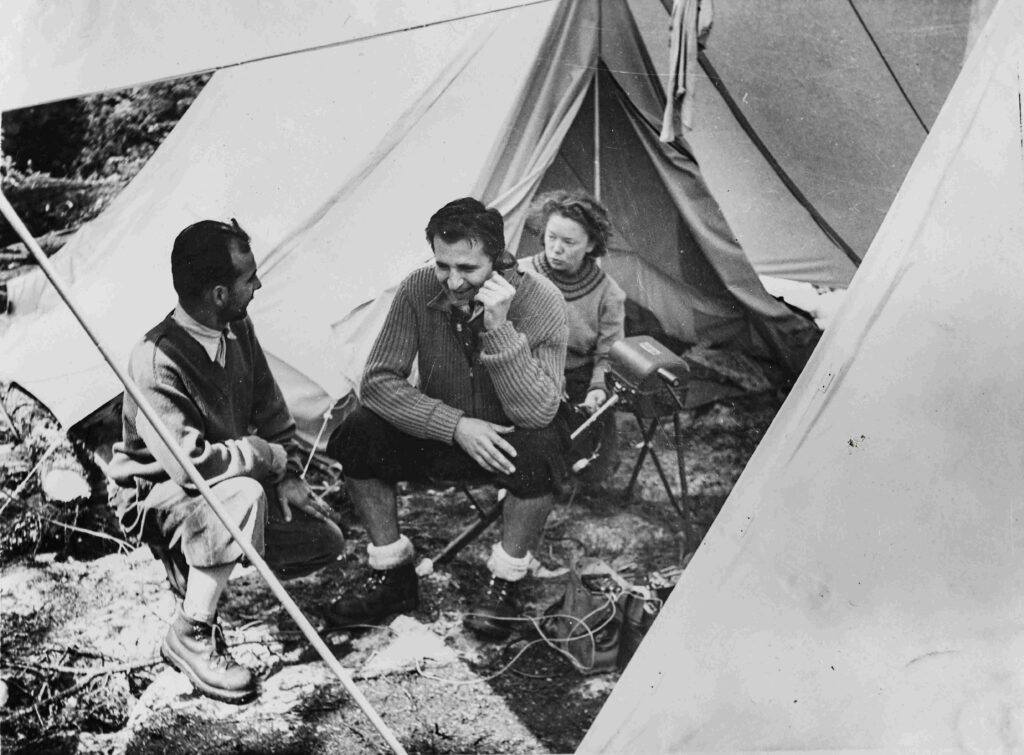
The announcement is made to the intermediate camps and the surface team.
Claude Arnaud had been waiting for the news for several hours.
On August 15, a violent flood hit, and Fernand Petzl and Jean Lavigne’s group were stuck in the cold and damp for almost 24 hours.
Fortunately, alerted by telephone and whistle, a team was able to bring them assistance by throwing some equipment, food parcels, tents, comforters and a change of clothes into the waterfall.
They set up a makeshift camp (to become the foreigners’ camp) on a sandy platform, waiting for the water to recede so they could climb the Ouragan waterfall.
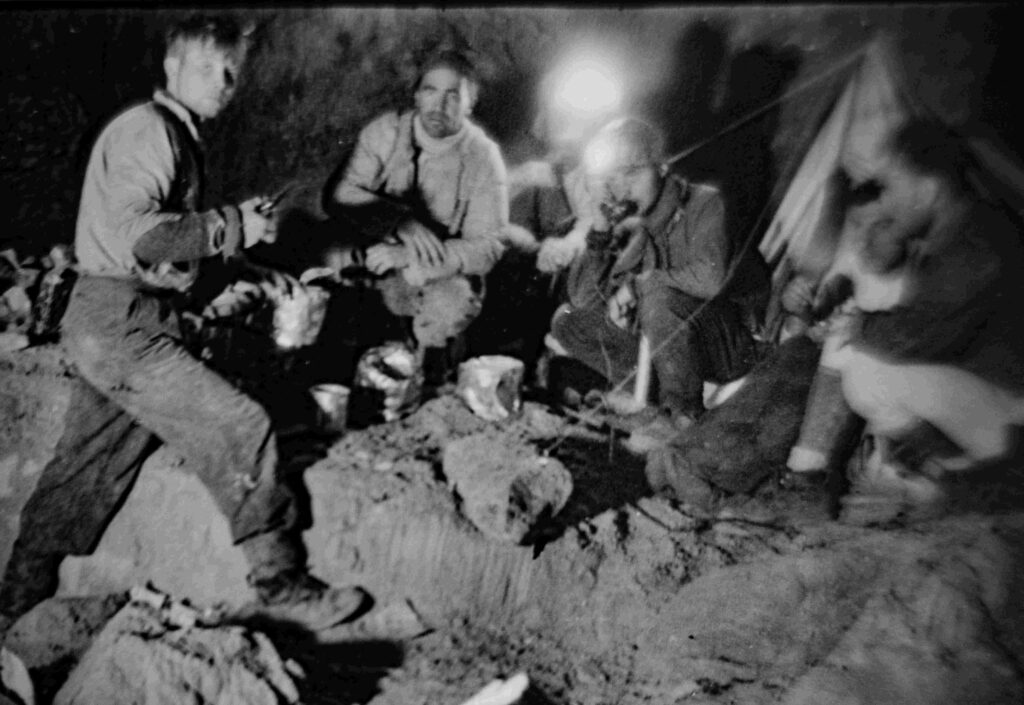
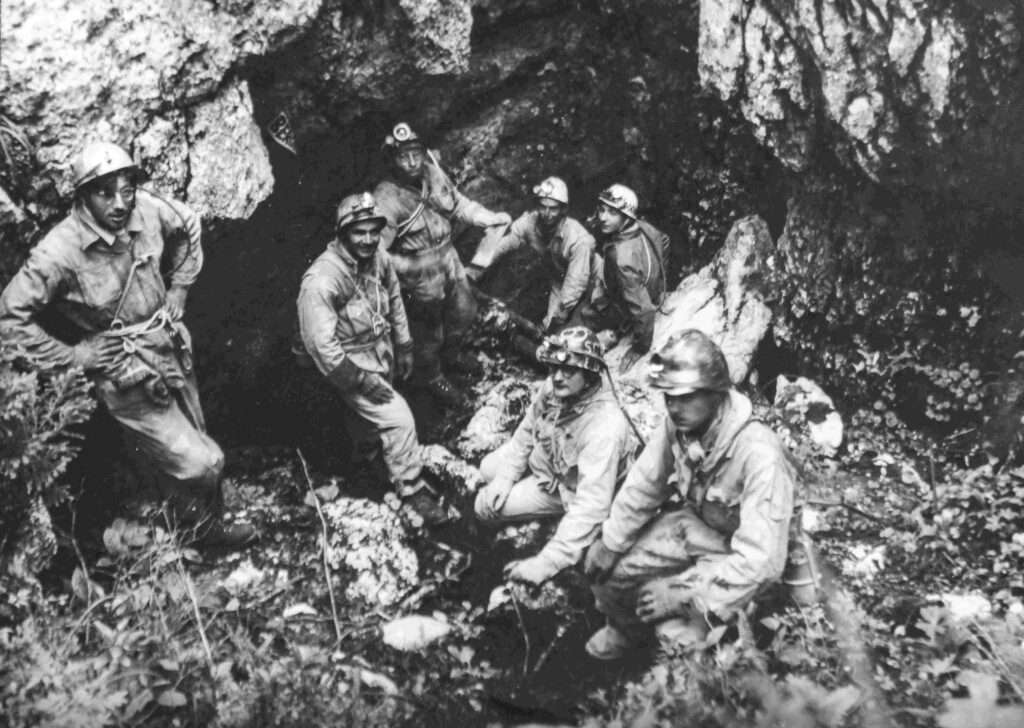
It’s the end of the exploration after 15 days underground, the end of a great collective adventure in which 19 cavers, including 7 foreigners, made it all the way to the final siphon, with the support of the teams on the surface and at the various support camps, without whom this would not have been possible.
De-equipping, arduous portaging and outings follow one another until August 19. Their eyes will have to readjust to the light. What’s more, despite having watches, they lose all notion of day and night time.
The success and the record were celebrated in style, with flashbulbs going off, interviews with journalists and a telegram from René Coty (then President of the French Republic, who was staying in Vizille):
“With heartfelt thanks for the profound sentiments you have kindly expressed, your neighbor in Vizille sends his warmest congratulations to all those who have methodically prepared for, and valiantly achieved, this victory for speleology”.
It’s important to note that, thanks to the quality of their preparation, organization and solidarity, there were no serious accidents during the 4 years of exploration.
The 1956 expedition to -1000 marks a milestone in the development of speleology.
Since then, year after year, the equipment used by cavers has become lighter, and lighting, techniques and resources have been refined. They allow new advances and discoveries that were not possible at the time.
These discoveries can be found on the pages dedicated to the different networks that now make up the Berger network.
1956 team photo:
Standing background:
Georges Marry, Paul Brunel, Marius Gontard, J.Mahot, Jo Berger, Pierre Breyton, Morrachini, Pepitot, Jean and Abelle Lavigne
Seated:
Georges Mathieu, Georges Garby, Fernand Petzl, Aldo Sillanoli, Robert Juge, Jean Cadoux, Jacques Berthezen, Yves Noirclerc. Claudine Leconte, Marc Soulas, Louis Potié, Bernard Sert
Missing from photo:
Louis Eymas, Claude Arnaud, Pierre Lafont, Gérard PeaudeCerf, Pierre Chevalier, Woerlé, Bruel, Ruitz, Scheinder. Bellier
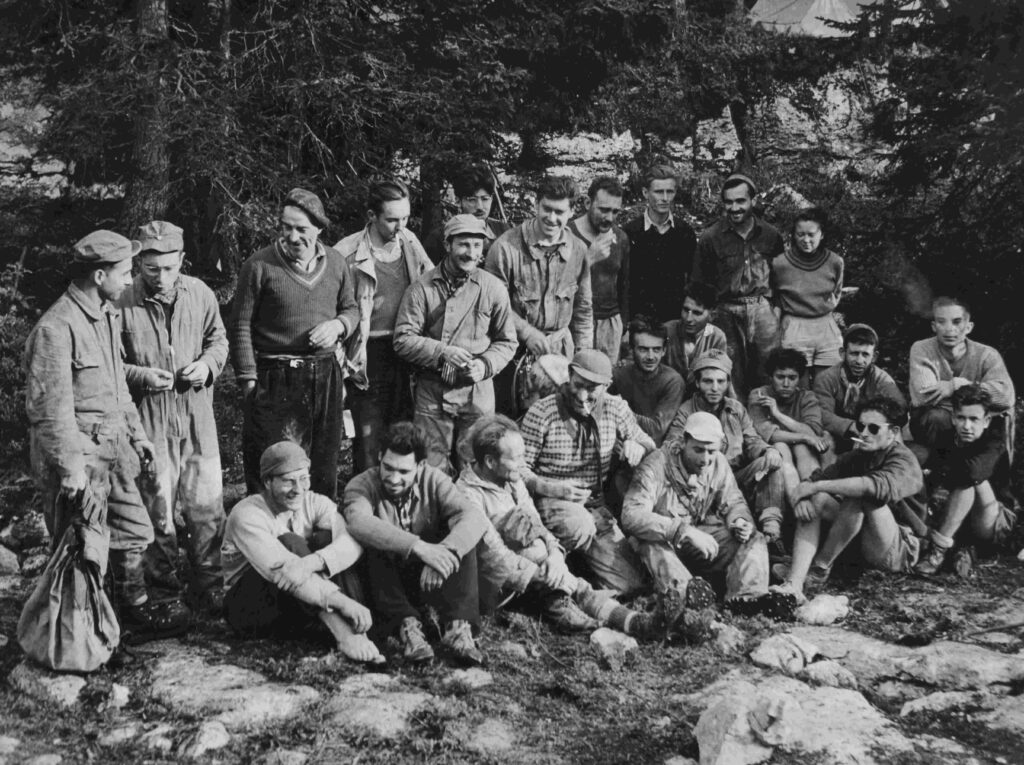
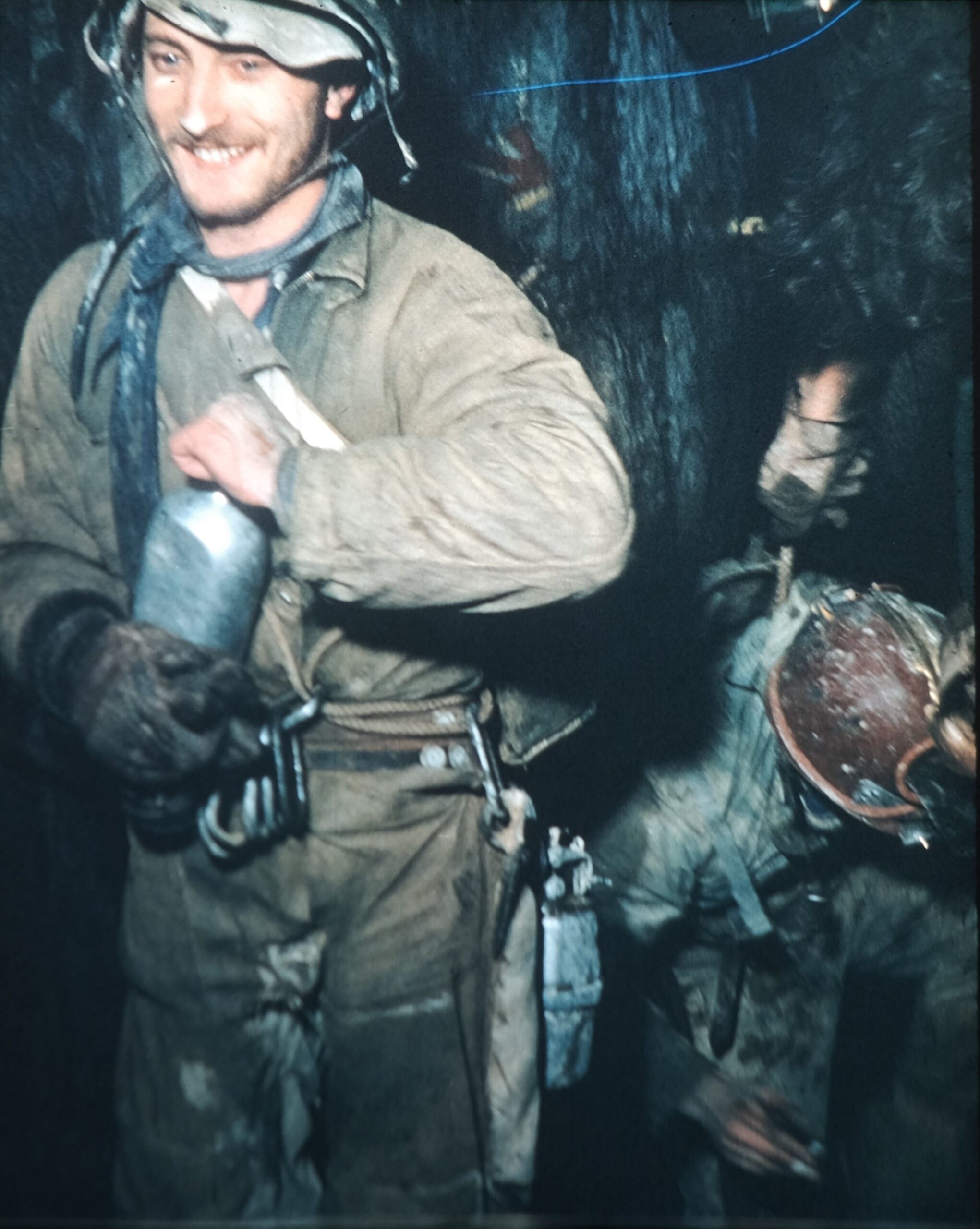
Anecdote: Deep-sea medicine
Bertezene suffers the onset of an ear infection. He is treated by the doctor (Docteur Brunel) with the means at hand. The oil from a can of sardines does the trick, being warmed up and slipped into the unfortunate caver’s ear. We’ll let you discover the result of the operation at the beginning of the soundtrack.
Video of the film “Siphon -1122” shot during the final expedition in 1956. The film was awarded the Golden Gentian prize at the 12th Trento Film Festival in Italy.
Photos : Collection Jean Lavigne, Jo Berger, Georges Marry
